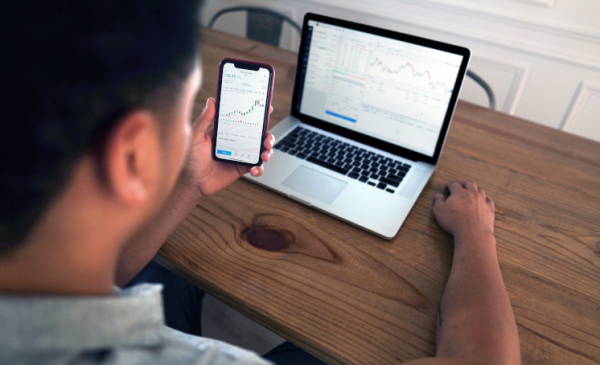However, mastering the basics of using indicators in your trading strategy could help improve trading performance if done correctly.
In this article, we will explore the different types of indicators that are useful in formulating successful forex trading strategies. We will discuss their various applications and benefits, so read on if you want to take your interest in forex trading one step further.
What are indicators, and how do they work?
Indicators are a type of analysis tool used to provide guidance when trading. They help traders determine the potential direction of market trends and identify entry and exit points for making trades. Indicators are derived from mathematical formulas based on price action, volume, open interest or other data points.
Indicators are generally grouped into two categories: lagging and leading. Lagging indicators are based on historical data, whereas leading indicators use current market conditions to generate signals.
The Saxo broker Dubai offers a wide range of indicators that can be used to inform traders' decision-making. Saxo broker Dubai's platform also offers a wide range of customisable trading tools, including oscillators and support & resistance levels, which can be configured according to the trader's preferences.
The benefits of using indicators for forex trading
The use of indicators can provide traders with a range of valuable benefits. By using indicators to identify market entry and exit points, traders can limit their risk and maximise potential gains. Indicators also help traders assess trends in the market so they can make more informed trading decisions.
Furthermore, using indicators helps increase the accuracy of a trade by providing traders with a higher probability of success. It is because indicators provide signals that can anticipate price action and alert traders to potential opportunities in the market.
Finally, using indicators for forex trading can help simplify the process of making trades by eliminating the need for manual analysis. By relying on technical indicators, traders can remove some guesswork in forecasting market trends.
Some popular indicators used in forex trading
The moving average is one of the most popular indicators used in forex trading. This indicator tracks the average price over a given period and can be used to identify price trends. Moving averages are excellent for identifying support and resistance levels and entry and exit points for trades.
The Relative Strength Index (RSI) is another popular indicator used in forex trading. This indicator measures the strength of an asset's current price relative to its historical prices and helps traders identify potential overbought or oversold conditions.
The Bollinger Bands are another valuable tool for technical analysis. This indicator consists of two lines that form a band around a central line. The band indicates the range of price volatility and can help traders identify overbought or oversold conditions in the market.
Another popular indicator used in forex trading is the Stochastic Oscillator. This indicator tracks price movements and helps traders identify potential buy or sell signals. It can also be used to identify market trends and entry and exit points for trades.
How to use indicators to make profitable trades
To use indicators effectively, traders should first develop a trading strategy. It will help them identify potential entry and exit points for trades and determine how much risk they are willing to take. Once traders have developed their strategy, they can use indicators to make informed decisions about when to enter and exit the market.
When using indicators, traders should always remember to practice sound money management. It includes setting a stop-loss and take-profit level for each trade and limiting the number of positions that can be opened at any given time.
In addition, traders should also look for confirmation signals before entering into trades. It involves looking for signals from multiple indicators that suggest that the market is likely to move in a specific direction. By combining technical and fundamental analysis, traders can increase their chances of making profitable trades.
Risks associated with using indicators
One of the risks associated with using indicators is that they can produce false signals. It occurs when an indicator suggests a specific direction for price movement, but the market fails to follow this signal. Traders should always use multiple indicators and research the market before making trades.
Another risk associated with using indicators is overtrading. It occurs when traders open too many trades at once and can lead to losses. Traders should always ensure that they are only taking trades with a high probability of success, which will help reduce the risk associated with trading.
Finally, some indicators may only be suitable for some types of markets or strategies. As such, traders must research and ensure that they are using indicators suitable for their particular trading style.





